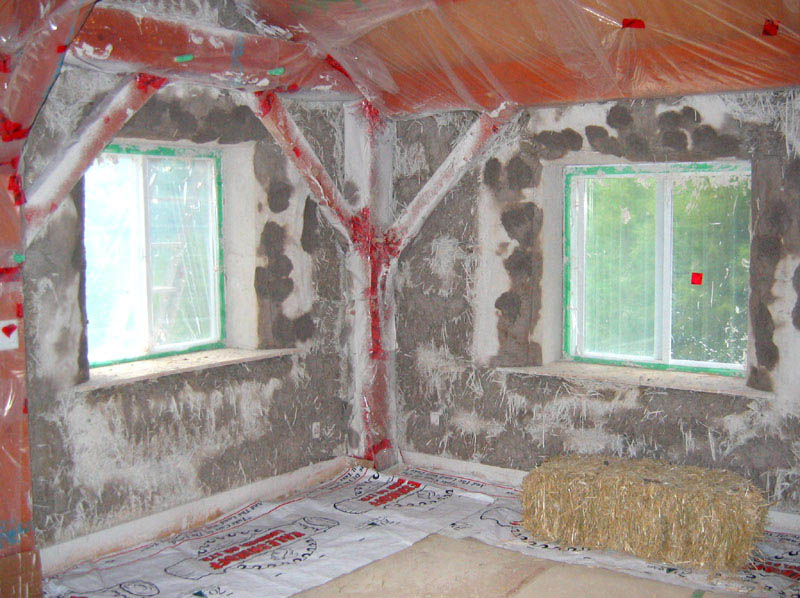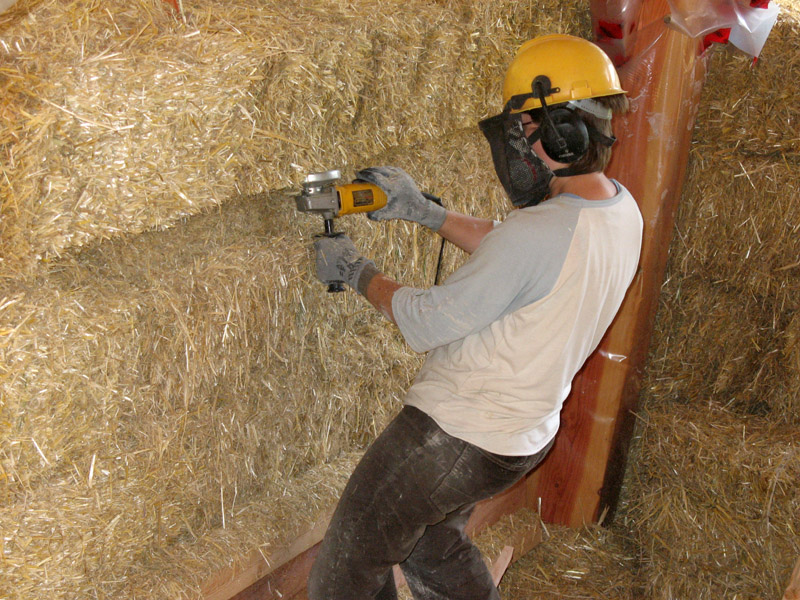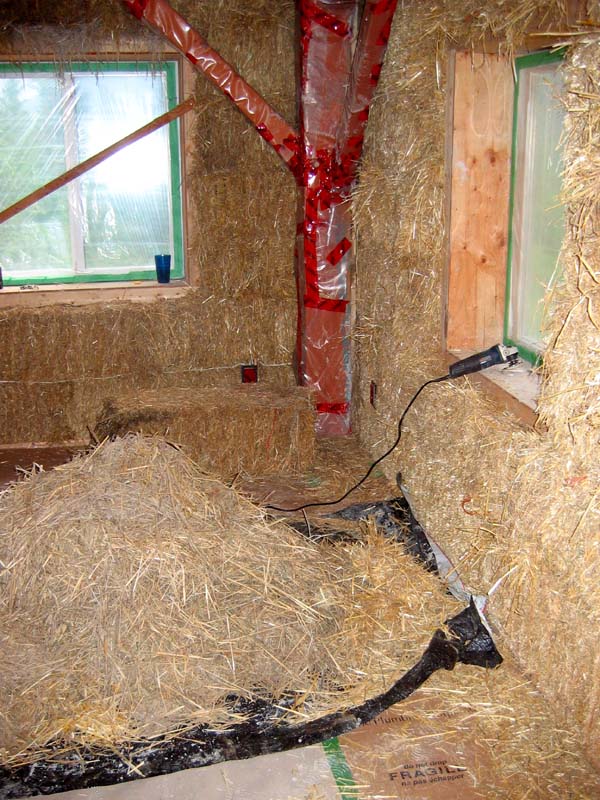After the walls have been stuffed and shaped, the clay slip is sprayed onto the walls with a stipple hopper attached to an air compressor. Clay slip is a mixture of bagged clay and water. This step saves time and labour over some more common plaster methods.
Generally, plaster on bale walls is applied in three stages. A scratch coat is a rough layer of plaster directly touching and penetrating the raw bale walls. This layer helps to shape the walls and adhere subsequent layers to the wall. A brown coat is the middle layer of plaster that gives more shape and smoothness to the walls. And the finish coat creates the final look to the walls and can be coloured to suit the owners’ tastes.
As you can guess, these multiple layers of plaster take time and labour to apply and cure. In searching for a way to speed up the process but still achieve the durablility and professionally finished look of the plaster, the owners opted for a sprayed on clay slip coat in place of a hand applied scratch coat.
The clay slip coat penetrates the bale walls properly and promotes adherence of the subsequent plaster layer to the walls. The key was to mask the windows, floor, timbers, and the lower part of the cathedral ceiling before spraying to prevent clay coverage that would be difficult to clean later.



